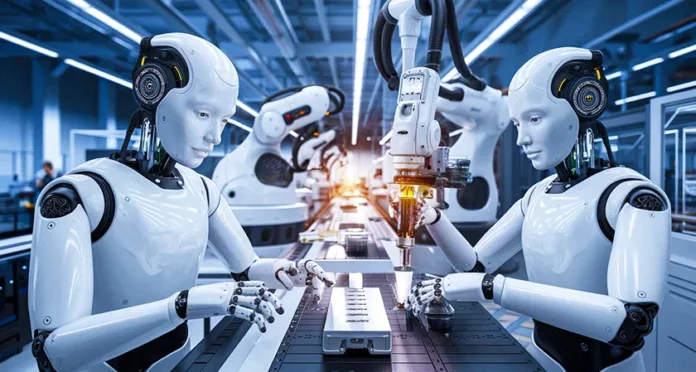
In 2025, robotics and automation are no longer distant dreams—they’re shaping the backbone of modern industry. From manufacturing lines to healthcare systems and logistics, intelligent machines are enhancing productivity, reducing human error, and enabling innovation like never before. This shift not only improves operational efficiency but also redefines the role of human workers in the workplace.
The Rise of Robotics in Modern Industries
Over the past decade, the development of industrial robots has surged exponentially. These machines now perform tasks with speed, precision, and consistency that far exceed human capabilities. Whether it’s assembling vehicles, packaging goods, or welding metal parts, robots have become indispensable in sectors like automotive, electronics, and even food production.
One of the key drivers behind this rise is the integration of AI-powered robots, which can learn from data, make autonomous decisions, and adapt to complex environments. These machines are no longer limited to repetitive tasks; they can identify defects, navigate dynamic spaces, and collaborate safely with human workers.
Smart Manufacturing and Industry 4.0
The concept of smart manufacturing, often referred to as Industry 4.0, is central to the robotics revolution. By combining robotics with technologies like the Internet of Things (IoT), big data, and machine learning, manufacturers are building highly adaptive production systems.
In this landscape, robots are connected, context-aware, and data-driven. For instance, predictive maintenance allows robots to notify engineers before a breakdown occurs, minimizing downtime. Advanced sensors enable real-time quality control, ensuring consistent product standards without human inspection.
Robotic Process Automation in the Digital Workplace
Beyond physical robots in factories, robotic process automation (RPA) is transforming digital workflows. RPA involves software bots that handle routine administrative tasks—data entry, invoice processing, customer service responses—with incredible efficiency.
Industries like finance, insurance, and retail are deploying RPA to reduce operational costs and free up employees for more strategic work. These digital workers operate 24/7, don’t make mistakes, and can scale instantly based on demand.
Healthcare and Robotics: A Life-Saving Synergy
In healthcare, robotics and automation have unlocked new possibilities. Surgical robots now assist doctors with minimally invasive procedures, delivering unparalleled precision. Automated medication dispensers, AI diagnostic tools, and robotic exoskeletons are all examples of how technology is enhancing patient outcomes.
During global health crises, such as pandemics, robots have proven invaluable in tasks like disinfection, remote monitoring, and contactless delivery, keeping both healthcare workers and patients safe.
Logistics and Warehousing: Redefining Supply Chains
E-commerce giants and logistics companies are embracing automation to keep up with growing consumer demand. Warehouse robots handle sorting, packing, and transporting goods, often working alongside human employees. Autonomous delivery vehicles and drones are also being tested for last-mile delivery, promising faster and more efficient shipping options.
These advancements are making supply chains more resilient and responsive—crucial in a world where agility and speed are competitive advantages.
The Future of Work: Collaboration, Not Replacement
While some fear that automation will eliminate jobs, the more accurate outlook is that it will transform the workforce, not replace it. As robots take over repetitive and dangerous tasks, humans can focus on roles requiring creativity, critical thinking, and emotional intelligence.
Future employees will need to adapt by developing skills in robot management, programming, AI, and data analysis. Companies are already investing in upskilling programs to ensure workers transition smoothly into the automated future.
Challenges and Ethical Considerations
Despite its benefits, robotics adoption isn’t without challenges. High initial costs, cybersecurity risks, and ethical concerns around job displacement and privacy must be addressed. Ensuring equitable access to automation and establishing clear regulations will be key to a sustainable future.
There’s also a need for human oversight in critical sectors like healthcare and defense, where trust, accountability, and moral judgment are irreplaceable.
Conclusion
The future of robotics and automation is bright, promising a more productive, innovative, and efficient world. From smart manufacturing to robotic process automation, every industry is witnessing a transformation. Rather than fearing this evolution, embracing it—while addressing its challenges responsibly—will unlock the full potential of human and machine collaboration.
Industries that proactively adapt to this shift will thrive in the coming decade, and those who lag may struggle to remain competitive. As we move forward, the synergy between humans and robots will define success in the age of intelligent automation.